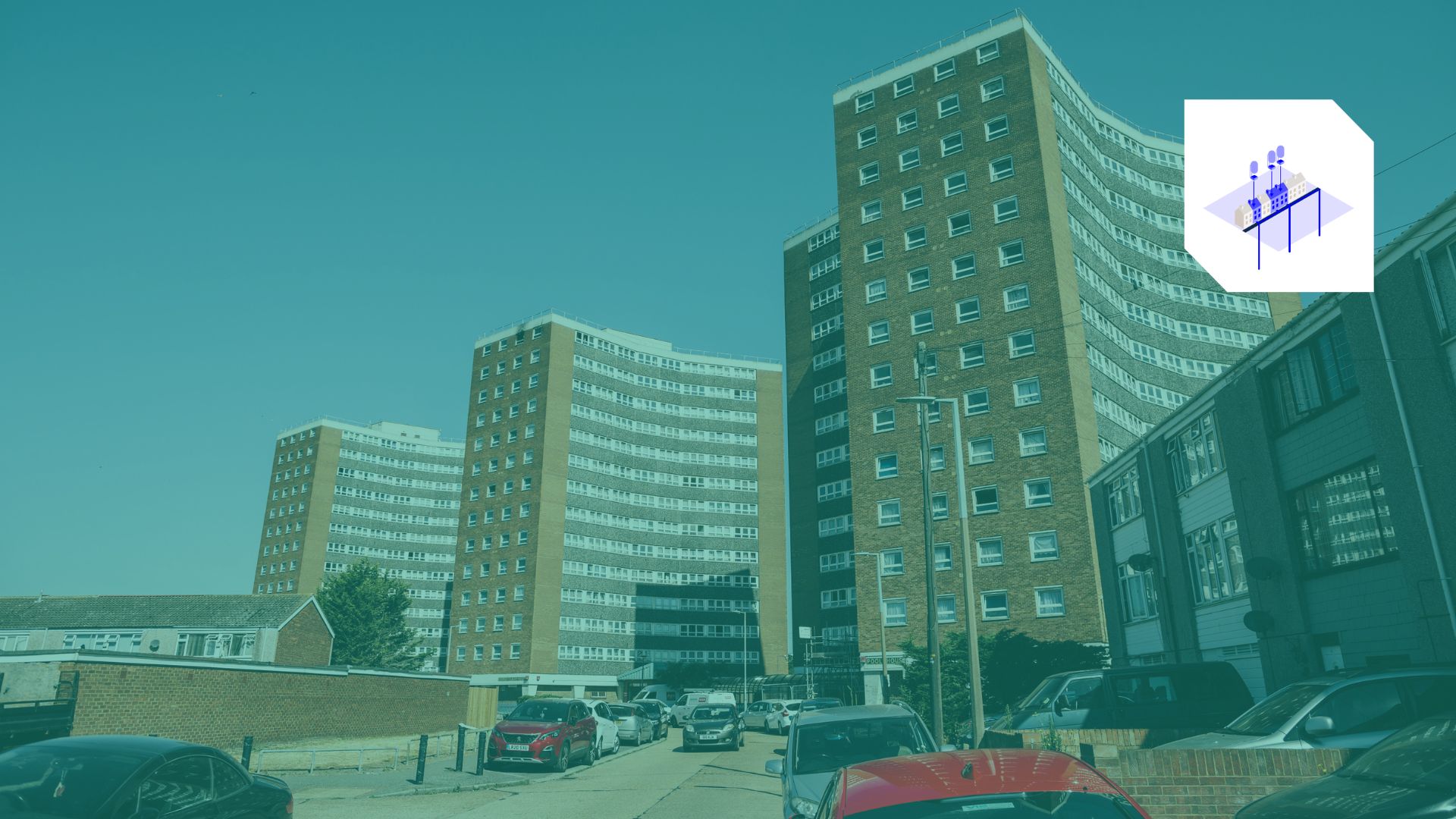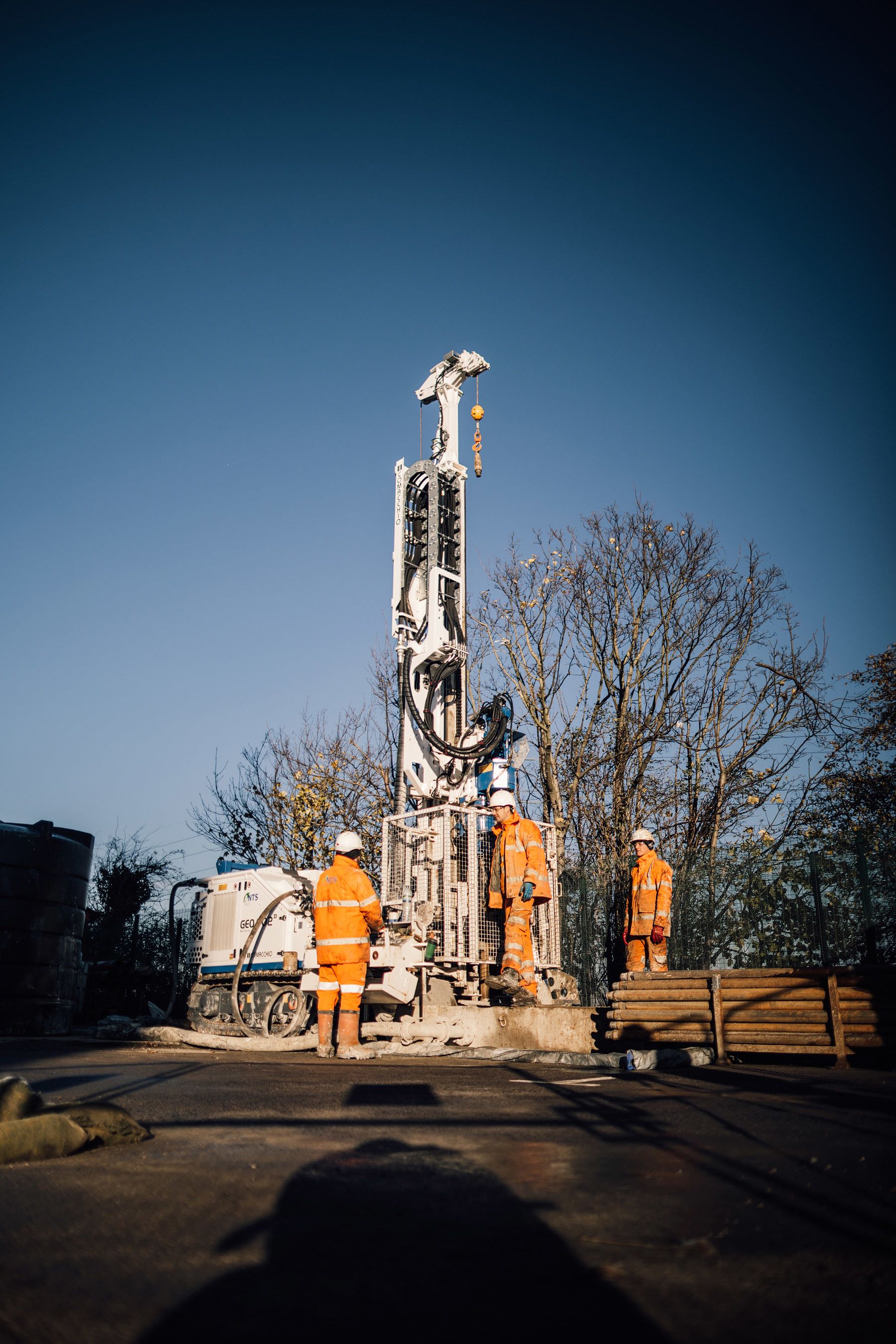Kensa’s Essex retrofit

Across 273 flats in three high-rise tower blocks, Kensa replaced old, inefficient night storage heaters with networked ground source heat pumps.
The upgrade increased energy efficiency threefold – reducing heating and hot water bills for residents by up to 66%.
This project was the winner of ‘Energy Project of the Year—Social Housing’ at the Energy Awards 2024.
Key objectives and/or aims
Kensa’s Essex retrofit scheme aimed to reduce heating bills and fuel poverty for residents of Chadwell St Mary’s in Thurrock Council. Due to the inefficient nature of the old night storage heaters, many residents had to endure heating bills of more than £3,000 per year.
|
Dates |
July 2022 until November 2023 |
|---|---|
|
Location |
Chadwell St Mary’s, Thurrock, Essex, England |
|
Organisations involved |
Kensa and Thurrock Council |
|
Specific technology |
Networked ground source heat pump |
|
Scale |
One complex/estate |
|
Property type |
Flats, tenements and other high-density buildings |
|
Rural/urban classification |
Urban |
|
Tenancy mix |
Single owner |
|
Project resources |
Case study – Chadwell St Mary's, Thurrock Council - Ground Source Heat Pumps Project |
Summary
Thurrock Council secured £3.2 million from wave one of the government’s Social Housing Decarbonisation Fund to retrofit three tower blocks – Gooderham House, Poole House and George Tilbury House – with networked ground source heat pumps, replacing inefficient night storage heaters. The fund, a £3.8 billion 2019 manifesto commitment, aimed to support local authorities and social landlords in retrofitting their housing stock at scale over 10 years. Kensa installed a shared ground loop beneath the car park, comprising 109 boreholes and nearly 30 km of vertical drilling over six months. The project was named ‘Energy Project of the Year – Social Housing’ at the Energy Awards 2024.
This upgrade significantly improved efficiency, with the new heat pumps operating at 300% efficiency compared to 100% for the night storage heating they replaced. Chadwell St Mary’s residents are expected to see 66% savings on their heating and hot water bills, a significant benefit given that over half of participants were identified as being at risk of fuel poverty prior to the scheme.
Chadwell St Mary's retrofit will reduce carbon emissions by over 70%. Over the system’s lifecycle, the heat pumps installed are projected to save 7,080 tons of CO2 compared to the night storage heaters. This is the equivalent of taking 1,540 cars off the road for one year, significantly improving local air quality and supporting net-zero targets.*




How it works
Scale
Three separate tower blocks, 273 flats in total
Tenancy mix (%)
100% social housing
Uptake of clean heat offer
100% of households
Key people/roles
– Kensa’s commercial director and sustainability director
– Thurrock Council’s capital programme delivery manager
– Housing officers trained to assess fuel poverty remotely (by National Energy Action)
Engagement method
During the COVID-19 pandemic, Thurrock Council undertook National Energy Action-funded training with its frontline staff. This enabled home-working housing officers to conduct remote fuel poverty surveys with the residents of three tower blocks in Chadwell St Mary’s.
Through their research, they found a high number of residents were in fuel poverty, with many residents receiving heating bills over £3,000 before the energy cost increases of 2022 plunged many more households into a financial crisis.
Types of advice, surveys, or support provided
After Thurrock Council carried out remote fuel poverty surveys, Kensa conducted individual heat loss assessments for the 27 individual flat archetypes on site and used those results for flats of a similar type. For the entire duration of the project, Kensa had a full-time resident liaison officer on site who, alongside the installation teams, provided training and a simple user guide to the residents on how to use their new heating system.
Post installation, Kensa’s customer service team were on-hand to carry out follow-up visits with residents if they needed any additional support. For twelve months after completion, Kensa provided aftercare for any issues experienced by residents. Responsibility for this has now been passed onto the council’s own maintenance contractors, who were trained by Kensa.
Benefits of this approach
Networked heat pumps can help alleviate fuel poverty at scale and substantially reduce carbon emissions. This approach installs the most efficient form of heating, ground source heat pumps, into individual homes across a block of flats, street, or area, with each connected to a shared (or individual) ground loop. Additionally, households retain billing independence, meaning their bills only reflect the energy they use, much like individual gas boilers.
Get involved
Join us in sharing your projects to provide inspiration, learnings or resources to reduce barriers for areas moving towards a more coordinated approach to low-carbon heat.
Other case studies
Kensa’s Heat the Streets: retrofit at scale with ground source heat pumps
As a world-first approach, Heat the Streets showed the viablity of installing a shared ground loop on the public road like other utilities
Clean heat neighbourhoods: case studies
A collection of area-based approaches to provide inspiration, learnings and resources to deliver clean heat schemes


